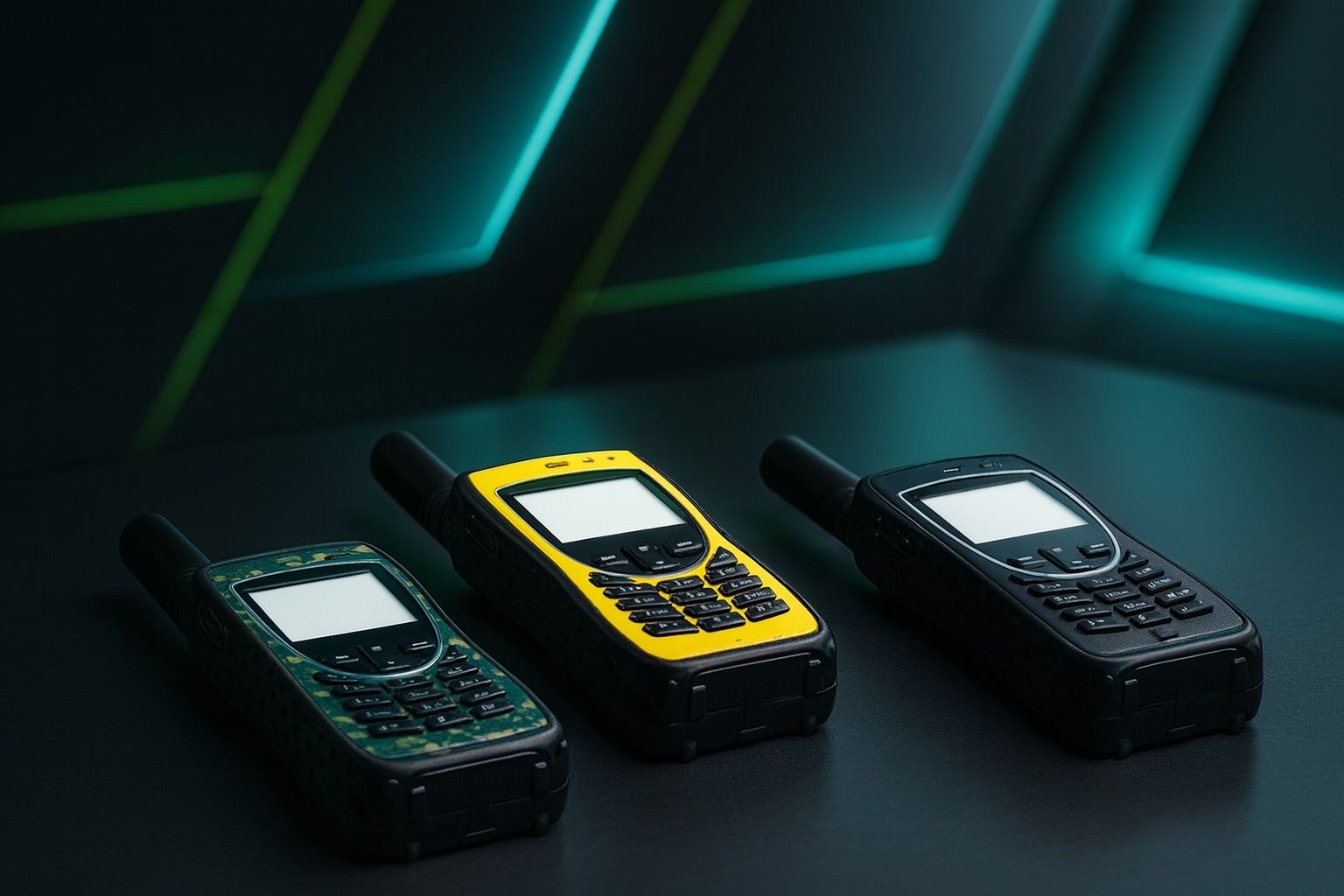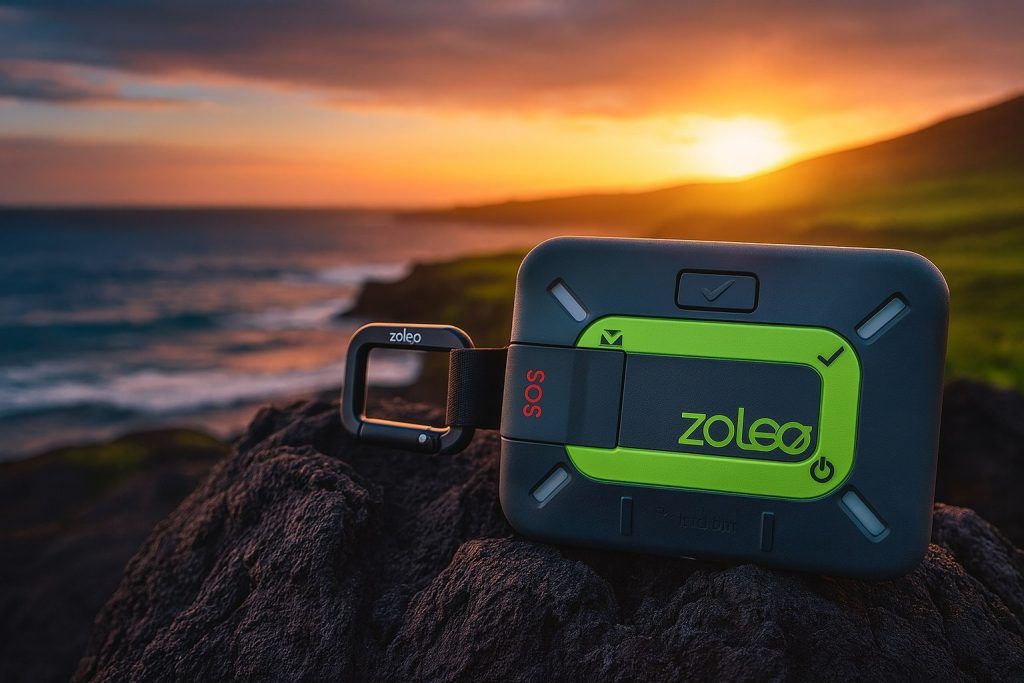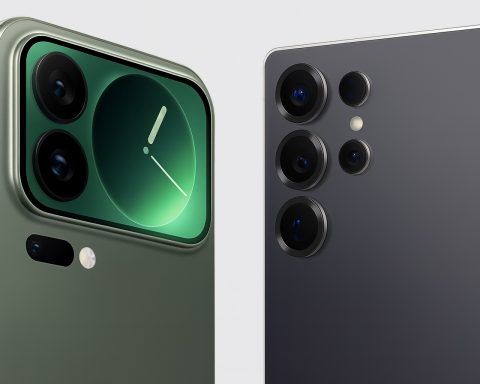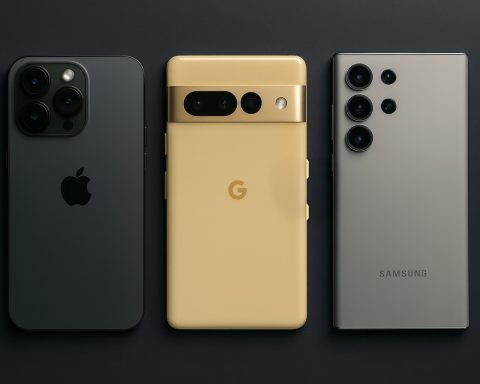- The Iridium 9555 launched in 2008, the Iridium Extreme 9575 in 2011, and the Iridium Extreme PTT edition in 2015.
- The 9555 has no official IP rating, while the Extreme 9575 and Extreme PTT both have MIL-STD-810F and IP65 ratings.
- The 9575 adds built-in GPS and a one-touch SOS button, unlike the 9555 which lacks GPS.
- The Extreme PTT edition adds push-to-talk group communication with up to 15 talkgroups stored on a single device.
- On the Extreme PTT, Phone mode delivers up to 6.5 hours of talk and 54 hours standby, while PTT mode provides up to 5 hours of talk and 16–17 hours standby.
- The 9555 and 9575 offer about 4 hours of talk time and 30 hours standby on standard batteries.
- PTT communications on the Extreme PTT are AES-256 encrypted.
- Data speeds are roughly 2.4 kbps on dial-up data, with the 9575 adding Short Burst Data for small packets.
- Iridium’s network operates a 66-satellite LEO constellation with global coverage and about 0.3 seconds latency, enabling seamless handovers.
- As of mid-2025, Iridium has not released a brand-new flagship handset since the Extreme 9575 (2011); new offerings include the Iridium GO! exec (2023) and a 2023 Qualcomm partnership for satellite messaging.
Satellite phones are lifelines in off-grid adventures, high-seas voyages, remote work sites, and emergency situations. Iridium Communications offers some of the most trusted handsets on the market. Today, we pit the classic Iridium 9555, the rugged Iridium Extreme 9575, and the group-talk enabled Iridium Extreme PTT against each other. Which one comes out on top? You might be surprised! In this in-depth comparison, we’ll dive into full technical specs, design and durability differences, battery life, connectivity, pricing (as of 2025), ideal use cases from emergency to military, expert insights, and the latest news on Iridium’s satellite phone lineup. Let’s get started on this Iridium phone showdown.
Technical Specifications at a Glance
To kick things off, here’s a side-by-side look at the core specifications of the Iridium 9555, Iridium Extreme (9575), and Iridium Extreme PTT handsets:
| Feature | Iridium 9555 | Iridium Extreme 9575 | Iridium Extreme 9575 PTT |
|---|---|---|---|
| Launch Year | 2008 [1] (Predecessor to Extreme) | 2011 [2] (“Extreme” flagship) | 2015 [3] (PTT edition) |
| Dimensions (L×W×H) | 143 × 55 × 30 mm [4] (5.6″ × 2.2″ × 1.2″) [5] | 140 × 60 × 27 mm [6] (5.5″ × 2.4″ × 1.1″) [7] | 140 × 60 × 32 mm [8] (5.5″ × 2.4″ × 1.3″) |
| Weight | 266 g (9.4 oz) [9] | 247 g (8.7 oz) [10] | 268 g (9.5 oz) [11] |
| Battery Life (Talk) | ~4 hours [12] [13] | ~4 hours [14] | Phone Mode: up to 6.5 hours; PTT Mode: up to 5 hours [15] |
| Battery (Standby) | ~30 hours [16] [17] | ~30 hours [18] | Phone Mode: up to 54 hours; PTT Mode: ~16.5 hours [19] |
| Durability Rating | No official IP rating (basic water/shock resistance) [20] | MIL-STD 810F, IP65 (dust-tight, water jet resistant) [21] [22] | MIL-STD 810F, IP65 (same rugged specs as Extreme) [23] |
| Environmental | Operates –10 °C to +55 °C [24] | Operates –10 °C to +55 °C [25] | Operates –10 °C to +55 °C (PTT uses extended battery) [26] |
| Services Supported | Voice, SMS, data (2.4 kbps dial-up), email-to-SMS [27] [28] | Voice, SMS, data (2.4 kbps + SBD), GPS location, SOS distress [29] [30] | Voice, SMS, data, GPS, SOS (in phone mode), Push-to-Talk group comm [31] [32] |
| Special Features | Speakerphone, internally stowed antenna [33] [34] | GPS & online tracking, one-touch SOS button (24/7 emergency help) [35] [36]; wind-resistant mic | PTT Mode: one-to-many radio with dedicated PTT button & loudspeaker [37] [38]; AES-256 encryption for secure comms [39] |
| Network | Iridium LEO satellite network (global coverage) [40] | Iridium network (global), supports Iridium SBD data [41] [42] | Iridium network (global); interoperable with land-mobile radio systems via accessories [43] [44] |
Sources: Iridium product specs and retailer data [45] [46] [47] [48].
As seen above, the three phones share Iridium’s core capabilities (truly global voice and text), but they diverge in ruggedness and features. Next, we’ll break down these differences in detail.
Design and Durability
Iridium 9555 – Built for Basics: The 9555 has a no-frills, utilitarian design that still holds up today. It resembles a chunky old-school cellphone with an internally stowed antenna that you extend when in use [49] [50]. The keypad is weather-resistant and the handset is engineered for tough environments, but it lacks formal waterproofing or military certification. In practice, the 9555 can survive rain splashes and the occasional drop in the field, though it isn’t as sealed against dust/water as the Extreme [51] [52]. It feels solid and dependable – many users describe the 9555 as a “no-frills, reliable satellite phone known for its tough build and dependability” [53] [54]. Still, its exterior is more plasticky, and after all these years it does the job without extra bells and whistles.
Iridium Extreme 9575 – Rugged “Extreme” Upgrade: At a glance, the Extreme 9575 looks similar to the 9555, but a closer look reveals a more robust, ruggedized build. Iridium encased the 9575 in additional rubber armor and gaskets, achieving IP65 dust-proof and water-jet resistance, and MIL-STD-810F shock protection [55] [56]. In plain terms, this phone laughs off desert sand, torrential rain, vibration, and shock. You can drop it, use it in a storm or a sandstorm, and it keeps on working [57] [58]. The Extreme’s keypad is weather-sealed and even the microphone is wind-resistant for clarity in high winds [59]. A diamond-tread tapered grip on the body ensures it won’t slip from your hand easily [60]. Physically, the 9575 is actually slightly smaller and lighter than the 9555 (by about 19 grams) [61] [62], making it a bit more portable despite its tougher build. Notably, it features a guarded SOS emergency button on the top – a bright orange button under a protective cover – and an integrated GPS receiver for location services, which we’ll discuss later. Overall, Iridium “built [the 9575] to military specs… it handles harsh environments” [63], earning its “Extreme” name.
Iridium Extreme PTT – Dual-Mode Tank: The Extreme 9575 PTT edition takes the 9575’s hardy design and adapts it for push-to-talk. At first look it’s the same form factor, but you’ll notice a reinforced side PTT button and a slightly thicker profile to accommodate an extended capacity battery and loudspeaker [64] [65]. It weighs about 21 g more than the regular Extreme, and the depth grows to 32 mm to house the higher-capacity battery pack [66]. Durability-wise, the Extreme PTT carries the exact same MIL-STD-810F toughness and IP65 rating – this handset is every bit as tough in the field [67]. The extra loudspeaker makes group calls easier to hear in noisy environments, and the PTT button is built for quick, tactile use (so you don’t have to fumble with menus when you need to broadcast to your team). In essence, it’s the 9575 on steroids for team comms: same rugged shell, with modifications to excel as a “satellite walkie-talkie” device. It’s designed to withstand high-intensity use by military, first responders, and extreme field crews, just like its sibling – Iridium calls it “the toughest, most feature-rich PTT-enabled satellite phone on the market.” [68] [69]
Battery Life and Power
All three Iridium phones use lithium-ion battery packs, but the Extreme PTT’s battery is larger to support PTT operation. Here’s how they compare:
- Iridium 9555: Standard battery life of about 4 hours talk time and 30 hours standby on a full charge [70] [71]. This is sufficient for basic use – for example, a user could make a few brief calls per day off-grid and recharge every couple of days. The 9555’s battery is user-removable, and interestingly it’s cross-compatible with the 9575’s battery [72]. Many 9555 owners carry a spare if going on longer expeditions, as the phone can sit unused in an emergency bag for months and still have a charge when needed (keeping it off or in standby).
- Iridium Extreme 9575: Despite the more advanced features, the Extreme manages roughly the same 4 hours talk / 30 hours standby as the 9555 using its standard battery [73] [74]. Essentially, Iridium didn’t gain battery life with the Extreme, likely because GPS and the tougher specs consume a bit more power. For most purposes, ~4 hours of cumulative talk (or a month on standby if the phone is just on and waiting) is “adequate for a day or two of periodic use” before recharging [75]. Heavy users (e.g. multi-hour calls or constant tracking) will want to recharge daily or have extra batteries or a solar charger. The Extreme does support an “extended battery” option that can boost talk time to around 6 hours [76], but with the standard battery you’re looking at 4 hours. It’s a good practice for expedition users to keep the phone powered off or in standby until needed, to conserve juice.
- Iridium Extreme PTT: The PTT model ships with a higher-capacity battery by default, and it needs it. In Phone Mode, users get up to 6.5 hours of talk and 54 hours standby (significantly more than a standard Extreme) [77]. This is a great perk – the PTT edition can double as a longer-lasting regular sat phone. However, in PTT Mode, battery drain is higher because the phone is constantly listening to the network for incoming group calls. In PTT mode you can expect up to 5 hours of active talk time and about 16–17 hours standby (idle) before the battery is dead [78] [79]. In practical terms, that means if you leave the phone in PTT-ready state all day, you’ll likely exhaust it by day’s end – so PTT users often charge daily. The extended battery makes the device a bit bulkier, but it’s necessary to give a decent operating window for group comms. If needed, the PTT phone can also use the standard Extreme battery (physically it fits), but the runtimes would drop to the ~4h talk / 30h standby range. Overall, the Extreme PTT sacrifices some standby longevity for its always-listening radio feature, but its beefy battery compensates as much as physics allow.
Charging & Accessories: All models charge via a supplied AC adapter (with various global plug adapters) or DC car charger. They use a common charging interface. The phones also have a Mini-USB port which can charge the battery and is used for data tethering [80] [81]. The standard kits include a holster and an external antenna adapter – useful for conserving battery since you can connect to a vehicle or base antenna (letting the phone get signal without working as hard, which can slightly improve battery life during standby). In remote base camps, users sometimes run the phone off a 12V vehicle outlet or a portable battery bank to extend usage.
Connectivity, Network Coverage, and Data
One of Iridium’s biggest advantages is global coverage – and all three of these handsets tap into that strength. Iridium operates a constellation of 66 cross-linked Low-Earth Orbit (LEO) satellites, which means you can get a signal anywhere on the planet with these phones, pole to pole [82] [83]. No matter if you’re in the middle of the Sahara, on an Antarctic ice shelf, or 200 miles offshore in the Pacific, an Iridium phone can connect a call as long as you have a clear view of the sky. There are no regional dead zones for Iridium – a huge selling point over competitors (for example, Inmarsat phones won’t work in polar regions) [84] [85].
Voice and Text: All three devices support voice calling and two-way SMS messaging over the Iridium network. Call quality is generally good for satellite – there is some voice delay (about ~0.3 seconds latency) due to the signal traveling to space and back, but the low orbit of Iridium’s satellites keeps latency much lower than geostationary systems [86]. Users often report that an Iridium call feels akin to a regular cellphone call with maybe a slight pause. Iridium-to-Iridium calls (between sat phones) or to landlines are typically clear; calls to other satellite networks (e.g. to an Inmarsat phone) are possible but extremely expensive and less common [87]. Each phone has an ear-piece and loudspeaker; audio is mono and functional. The 9555 and 9575 have a standard 2.5mm headset jack for hands-free use [88] (the PTT model likely has this too, for remote speaker mics etc.). SMS on Iridium is limited to ~160 characters (and note, the sender’s number counts toward that, effectively ~120 characters of text usable) [89]. Emails can be sent/received as well by SMS-to-email gateway – a short email or just sending coordinates can be done, but it’s not a device for long messages. Still, texting can be a cheaper way to communicate on Iridium (often free to the sat phone if sent via Iridium’s online portal, and about ~$0.10-$0.20 to send out via the phone on many plans).
Data and Internet: These handhelds are not built for heavy data – their data capability is very slow, around 2.4 kbps (yes, kilobits) for circuit-switched data calls [90]. Practically, that’s dial-up modem speed. It’s enough to perhaps send a plain text email or download a tiny GRIB weather file if absolutely needed. All models can connect to a laptop via USB for data calls (Iridium offers software to dial an ISP or use their Direct Internet service). But “realistically, hardly anyone does this in 2025” except in a pinch [91], because it’s painfully slow and ties up the phone for minutes. The Iridium Extreme (9575) does add support for Short Burst Data (SBD) messaging [92] – essentially a way to send very small data packets (like GPS reports or IoT sensor data) more efficiently. SBD isn’t typically something an end-user triggers on the phone’s keypad, but third-party apps or devices can use the Extreme as a modem to send GPS pings, for example. The 9555, being older, is mostly limited to the basic 2.4 kbps dial-up style data, whereas the Extreme opens the door to integrated tracking and SOS signaling via data channels.
GPS and SOS: The 9555 does not have GPS. The Iridium Extreme 9575 introduced GPS and location services. You can periodically send your coordinates to a predefined contact or map service (e.g. it has a GPS tracking mode to send an SMS or email with your location at set intervals) [93]. More critically, the Extreme’s one-touch SOS button can transmit your GPS location and distress message to an emergency response center (the Extreme is GEOS-certified, linking to a 24/7 international rescue coordination service) [94] [95]. Essentially, pressing the SOS on a 9575 can alert search-and-rescue with your exact coordinates – a potentially lifesaving feature for lone adventurers. The Extreme PTT also has an SOS button but it only works in phone mode, not during PTT operation (since SOS uses the Iridium network to call or message the emergency center) [96]. Still, having GPS built-in on the Extreme models is a major plus for safety and tracking. The 9555 relies on you carrying a separate GPS or beacon if you want that capability.
Push-to-Talk (PTT) Group Communication: This is the hallmark of the Iridium Extreme PTT model. In PTT mode, the phone acts like a satellite radio – press the side PTT button and you instantly broadcast your voice to the other members of your talkgroup, with no dialing required and near real-time transmission. Iridium’s PTT service is the “world’s first global, satellite-based push-to-talk service” [97] [98]. It essentially extends the concept of push-to-talk (like traditional land mobile radios) to worldwide range via satellite. The PTT handset can operate in dual modes – you can switch between “PTT” and “Phone” modes via a toggle in the interface [99]. In phone mode, it works like a normal sat phone (voice, SMS, SOS as described). In PTT mode, the screen will show your currently selected talkgroup, and a press of the PTT button opens the channel. Multiple PTT handsets (and even other devices like the Icom IC-SAT100 radio) can be in the same talkgroup to communicate.
Iridium PTT is designed for team coordination: organizations can define one or many talkgroups via an online PTT Command Center tool, even limiting the geographic area where a given talkgroup is active [100] [101]. For instance, a disaster response agency might have a “Northwest Region” talkgroup covering a specific radius around Seattle, and a “Southwest Region” group for Los Angeles – each phone can be provisioned to participate in certain groups. Talkgroup coverage areas are configurable (from small ~100,000 km² regions up to “jumbo” multi-million km² zones) [102]. Up to 15 talkgroups can be stored on one device, although it can only actively monitor one at a time [103] [104]. The communications are encrypted with AES-256 on the PTT service [105], providing secure comms suitable for military and government use. When you push to talk, all active members in that group hear you (the device’s loudspeaker will sound, or their earpiece if connected). Latency is very low – essentially as soon as the satellite link is made, your voice goes through near-instantly. This can be critical for urgent team comms where even dialing a number would be too slow.
We’ll explore use cases for PTT later, but in short, Iridium PTT is a game-changer for situations where a dispersed team needs a “radio network” but cannot rely on any terrestrial infrastructure. “Iridium PTT extends the walkie-talkie model worldwide at the push of a button” [106] – if members of your group are spread across different continents, they’ll still receive the transmission. That said, it’s an add-on service that requires a special PTT subscription and at least two devices. Unlike standard calls which are billed per minute, PTT is a flat monthly fee per device for unlimited use (around $100–$150 per month per handset for typical plans) [107]. Therefore, it’s aimed at organizations rather than casual individual use. As one industry review noted, “Iridium PTT is intended for groups of users, not single individuals,” making it most beneficial to companies or agencies with high internal communication needs [108]. The Extreme PTT phone, importantly, can still make regular calls when needed – so it’s quite versatile.
Compatibility and Other Networks: All three phones are dedicated to the Iridium network – they are not GSM or CDMA cellular devices and cannot roam on cellular networks. (They also do not work with other sat networks like Inmarsat or Thuraya – you must use Iridium service plans/SIMs.) This means if you’re in an urban area with normal cell service, you wouldn’t typically use a sat phone (their calling rates are much higher than cellular). But you could, since they can call any phone number. Just keep in mind a satellite phone needs clear sky view; indoors or under heavy tree cover it may not get signal. Many users carry them as a backup: use a normal phone day-to-day and if they go out of coverage, then power up the Iridium unit.
Iridium’s network being LEO means the satellites move across the sky. The phones manage this seamlessly – calls are handed over from satellite to satellite. Occasionally you might hear a brief cut-out during a handover, but Iridium’s cross-linked satellites usually maintain the call without drop [109]. The advantage of LEO is the lower latency mentioned; the disadvantage can be that a satellite will only be above the horizon for ~10-15 minutes, so you need at least one satellite in view at all times for an uninterrupted call (the cross-links and constellation design are meant to ensure this, barring blockage like mountains or buildings).
Bottom line: In terms of connectivity, the 9555 and 9575 give you the same calling and texting capabilities and global reach, with the 9575 adding emergency SOS and GPS tracking features. The 9575 PTT includes all of that plus the unique push-to-talk group comms, essentially combining a sat phone and a sat radio in one. All three rely on Iridium’s network – which, as of 2025, remains the gold standard for coverage. As one expert puts it, “Iridium is the broadest satellite phone service… a safe bet if your adventures will take you around the world.” [110] [111]
Pricing and Availability (2025)
Satellite phones are a significant investment, but prices have become a bit more accessible in recent years – sometimes even bundled free with service contracts. Here’s the current pricing ballpark (USD) for these Iridium handsets and their availability:
- Iridium 9555: Typically $1,000 to $1,150 for a new unit as of 2025. One retailer lists the 9555 at about $1,145 for the standard package [112]. We’ve seen deals around ~$999, especially if you commit to an airtime plan. Because the 9555 is an older model, some promotions offer it at a steep discount or even “free” with multi-year service agreements [113]. It remains in production and stock – Iridium and its dealers still sell the 9555 as the entry-level device. If you’re on a tight budget or only need occasional satphone capability, a second-hand 9555 is an option too: used units can sometimes be found for ~$600–$800 [114], given its long time on the market.
- Iridium Extreme 9575: Typically $1,300 to $1,500 for a new device. It’s often listed around $1,375 for the base phone package [115], though some sellers price it closer to $1,450 [116]. The Extreme is considered the premium model, so it commands a higher price – roughly a couple hundred more than the 9555. The kit usually includes the phone, high-gain antenna, AC/DC chargers, holster, cables, and sometimes an external antenna. Because it’s the flagship, freebies are less common, but you might see promotions (for instance, a service provider might throw in a free solar charger or a discount if you buy multiple units). Availability: The 9575 has been around since 2011 but it’s absolutely still the flagship and is readily available via Iridium’s dealer network globally. In fact, it’s often highlighted as “the best hand-held satellite phone on the market right now” by reviewers [117]. You can buy/rent it from specialty satcom stores, outdoor retailers, and even online marketplaces (just be cautious to get a proper unlocked unit with a warranty).
- Iridium Extreme PTT (9575P):~$1,600 to $1,800 for a new device. The PTT version is the most expensive of the trio due to its expanded capabilities. Current pricing is around $1,695 for a unit (seen at Apollo Satellite) [118] [119]. Sometimes it’s sold in bundles (e.g. five-packs for organizations) or with PTT accessories included (like docking stations or remote speaker mics). This phone is a bit more of a niche product – it’s aimed at enterprise, government, and teams – so it’s often distributed through specialized channels. That said, any individual can purchase one if they’re willing to pay for the PTT service. Availability: The Extreme PTT was introduced in 2015 and remains available. It hasn’t been discontinued or replaced; in fact, Iridium won an innovation award for it when PTT launched [120] [121]. It’s not as commonly stocked by general outdoor gear stores, but you can get it through Iridium partners, satphone retailers, or direct enterprise sales. Because to use PTT you also need to set up service with Iridium or a provider, buyers of this phone typically arrange the service plan at purchase.
Service Costs: It’s worth noting that owning the handset is one part; using it is another. Iridium airtime isn’t cheap. For voice, postpaid plans often run $50–$150 per month for a small bundle of minutes, or prepaid SIMs where minutes cost on the order of $1 to $1.50 each [122] [123]. PTT service, as mentioned, is a monthly fee per device (~$120/mo typical for a small talkgroup) [124]. Be sure to factor in these costs when comparing use cases – the most capable device (Extreme PTT) also incurs the highest ongoing costs if you use the PTT feature. Meanwhile, basic emergency use of a 9555 can be maintained with a low-cost standby plan or prepaid vouchers.
Future-proofing: One question buyers often have is whether to wait for a new model. Interestingly, Iridium has not released a newer phone since the Extreme. As of mid-2025, the 9555 and 9575 Extreme are still the current models, and Iridium has been sticking with them because they’re proven reliable [125]. Rumors do circulate of an “Iridium Extreme 2” or next-gen phone, but nothing official has been announced [126] [127]. So if you need a sat phone now, these models are it – no need to wait for an elusive “Iridium 9580” or similar. Iridium’s focus lately has been on new services and partner devices (more on that in the news section below) rather than replacing the handsets. All current phones will continue to work with Iridium’s upgraded satellite constellation (Iridium NEXT, fully deployed in 2019) and services.
In summary, the 9555 offers the lowest upfront cost, the Extreme 9575 is a bit pricier for the added durability and features, and the Extreme PTT is the priciest due to its advanced group comm capability. They’re all available and supported as of 2025. Now, which one makes sense for you? Let’s look at ideal use cases for each.
Ideal Use Cases and Scenarios
Different situations call for different satellite phone capabilities. Here we break down which Iridium phone shines in which scenario:
- 🚨 Emergency & Disaster Preparedness: If you’re preparing an emergency kit or involved in disaster response, reliability and SOS functions are key. The Iridium Extreme 9575 is often the top choice for emergency use because of its one-touch SOS beacon and GPS tracking. In a life-threatening scenario, being able to press a button and automatically call for help with your coordinates can be literally lifesaving [128] [129]. First responders and search-and-rescue teams also favor the Extreme for its ruggedness – it can survive harsh conditions during a disaster. The 9555, while reliable for making calls, lacks the SOS button; you’d have to call out for help manually. So, for individual preparedness, many experts recommend spending more for the Extreme’s safety features. “The Iridium Extreme delivers… an SOS button to call for professional rescue assistance when things take a serious turn,” notes one adventure gear guide [130]. That said, a 9555 is far better than nothing – it can absolutely be a lifeline if you just need to dial out to emergency services or family. It’s also a bit simpler to use under stress (no extra features to manage). Iridium Extreme PTT can play a role in organizational emergency response (e.g. coordinating relief teams across a region), but an individual preparing a go-bag likely wouldn’t need the PTT function. They’d be more concerned with basic voice out and SOS – again tipping the scale toward the Extreme 9575.
- 🌊 Marine & Offshore: Out on the water, signal coverage and weather durability are critical. All Iridium phones have full ocean coverage (a big reason they’re popular with sailors). For blue-water sailing, fishing vessels, and offshore rigs, the Iridium Extreme 9575 is generally ideal. Why? Its IP65 rating means it can handle sea spray, rain squalls, and boat vibration far better than the 9555. If it gets wet or dropped on deck, it’s less likely to fail. As one marine user put it, an IP65 phone is what “you need if you’re constantly around water” [131]. The 9555 is “water, shock, and dust resistant” to a degree [132], so it can work on a boat, but you’d want to be more careful to keep it dry (perhaps in a waterproof bag when not in use). Also, the Extreme’s included emergency SOS could broadcast your coordinates if you’re in trouble at sea – a potentially life-saving feature if your vessel is sinking or you’ve got a medical emergency on board. External antennas are commonly used on boats: you can mount an Iridium antenna on the stern or mast and plug the phone into a docking unit, creating a sat phone “fixed phone” with hands-free use – both 9555 and 9575 support this with appropriate docks. The Extreme PTT is less common in civilian maritime use, but it’s very useful for professional fleets or defense maritime units. For example, a fleet of workboats or naval patrol craft could all have PTT handsets to coordinate instantly across the ocean. PTT could also allow a ship’s crew to communicate with a shore office or other vessels as a group (like a marine radio net that’s not limited by range). In short: recreational mariners and solo sailors will appreciate the Extreme 9575’s toughness; commercial and military maritime operators might deploy Extreme PTT so multiple vessels stay in constant contact.
- 🎖️ Military, Security & Field Operations: These are scenarios where communications can be mission-critical and conditions are extreme. The Iridium Extreme 9575 and Extreme PTT were literally built with military users in mind. The 9575’s military-grade specs (MIL-STD-810F) and secure SOS features align well with the needs of soldiers, peacekeepers, and security teams operating in remote areas. For example, Special Forces teams have used 9575’s for their robust build and the ability to call for evac if needed. But often it’s the Extreme PTT that shines for tactical use. With PTT, an entire unit can have real-time group comms. A commander can give orders to all team members simultaneously at the push of a button – no dialing, no waiting. The communications are encrypted end-to-end (AES-256), which is crucial for military/security use where interception is a concern [133]. An Army unit in the field could use PTT phones to coordinate movements even if they’re spread across a wide area with no radio towers. In fact, Iridium’s PTT service has seen strong adoption by militaries and governments worldwide. “Our customers serve in military and defense positions… we rely on Iridium’s network for global connectivity,” said one defense communications provider, noting they had “confidence” in the Extreme PTT devices after deploying them in the field [134] [135]. The ability for Iridium PTT to interoperate with existing land-mobile radio (LMR) systems via accessories is also a plus – e.g. a team can bridge their Iridium talkgroup with local VHF/UHF radio networks [136]. For lone operative use, the standard Extreme 9575 might suffice (it’s smaller/lighter and can still send SOS). But for group missions, Extreme PTT is unparalleled – you get a “grab-and-go” real-time comms solution that works anywhere on Earth [137] [138]. It’s worth noting Iridium also offers a dedicated PTT-only radio (the Icom IC-SAT100) for purely push-to-talk use, but having the Extreme PTT handset is more versatile since it can do both PTT and regular calls on one device [139]. In summary, for military/security: Extreme PTT for group ops, and Extreme 9575 for individual rugged use or backup. The 9555 would be a bit out of place here – it’s not hardened enough for heavy military use, unless as a backup phone at a forward base where conditions are controlled.
- 🗺️ Adventure & Exploration: For explorers scaling mountains, polar trekkers, desert overlanders, and jungle scientists – staying connected is a safety imperative. The Iridium Extreme 9575 is arguably the adventurer’s best friend. It is often cited as “the absolute best voice-only sat phone out there” for those who need dependable comms and can afford the best [140] [141]. Its ruggedness means it won’t flinch at being knocked around in a backpack with climbing gear, nor getting wet in a sudden downpour. Importantly, the Extreme’s SOS gives solo adventurers peace of mind – knowing that if you fall ill or break a leg in the wilderness, you can summon help even when days away from civilization. Many high-altitude expeditions, Arctic treks, and remote research teams carry the Extreme for these reasons. For instance, Iridium has shared stories of explorers using the Extreme on the South Pole trek and nomads using it in the Mongolian mountains [142] [143] – testament to its reliability in extremes. The 9555 can also serve adventurers who are perhaps on a tighter budget or doing less extreme trips. If you’re backpacking through moderately remote areas (say, a week in backcountry national parks) and just want a way to call family or authorities if needed, the 9555 will do the core job. It’s a “trusty workhorse” as one guide calls it [144]. It’s a bit bulkier and you must be mindful of weather, but it’s still durable. Many round-the-world overland drivers in the late 2000s used 9555s for their basic reliability. Iridium Extreme PTT is generally overkill for solo adventurers – unless you’re part of a larger expedition group or race. However, consider scenarios like an off-road rally race or a group expedition: multiple vehicles or teams could each have a PTT handset and keep in constant contact beyond line-of-sight [145] [146]. Rally organizers have indeed used Iridium devices to keep competitors and control rooms linked in remote rally raids [147] [148]. If you run a guided expedition business, having PTT for guides to talk to each other and base camp is valuable. But for the individual adventurer, the Extreme 9575 is usually the top pick, with the 9555 as a reasonable budget alternative if SOS and max ruggedness aren’t needed. And don’t forget to pair your sat phone with something like a solar charger if you’ll be out for long – keeping that battery topped up in the wild is crucial.
- 💼 Business & Remote Industry: In industries like mining, oil & gas, construction in remote areas, or just business travelers going off-grid, the key factors are reliable communication and team coordination. For a single engineer or executive deployed to a remote site, a 9555 or 9575 allows them to stay connected to HQ. If the environment is harsh (e.g. a dusty mine or humid jungle), the 9575 Extreme’s durability is worth it to ensure the phone survives the project. A field geologist in a remote desert might carry a 9555 to call in daily reports – if conditions are moderate that’s fine, but if there’s a lot of dust or rough handling, the Extreme provides that extra confidence. Now, for teams of workers spread out over a large site or multiple sites, Iridium PTT can hugely improve efficiency. Picture an oil exploration team with crews miles apart: instead of each crew having to dial others (and incur per-minute costs), they can all be on a PTT talkgroup to instantly share updates (“Line 3 pressure reading high,” “Moving to next drill location,” etc.). And since PTT is unlimited usage for a flat fee, businesses can control costs while enabling constant comms [149] [150]. We see uptake of Extreme PTT in sectors like utilities, logging, transportation, and NGOs. For example, a utilities company used Iridium PTT to connect field technicians and medical personnel across a wide area during a remote infrastructure project [151] [152]. Another use case: humanitarian missions, where teams in different villages can coordinate via a single talkgroup. In the business continuity context (disaster recovery), PTT phones can serve as a backup network if local comms are down – executives or response teams can all talk together if cell networks fail. The bottom line: for one-to-one business calls, any Iridium phone will work (9555 is the budget pick, 9575 if conditions demand it). For one-to-many operational comms, Iridium Extreme PTT is a powerful tool to “push your network beyond limits” when decisions can’t wait [153].
Expert Commentary and User Insights
What do experts and real-world users have to say about these Iridium phones? Here are a few choice insights and quotes that shed light on their performance and reputation:
- On the Iridium Extreme 9575’s Excellence: Outdoor gear reviewers consistently praise the 9575 Extreme for its top-tier capabilities. In GearJunkie’s 2025 satellite phone test, the authors noted the Extreme’s premium price but concluded that “if you want the absolute best voice-only sat phone out there, this is it.” [154] Reliability and toughness were key – they mention the 9575 does everything the 9555 does, “just with a military-grade durability rating for dust and water”, albeit at a steep price [155]. This sentiment is echoed by expedition leaders who value the Extreme as a no-compromise device when lives may depend on the call getting through.
- On the Iridium 9555’s Dependability: The older 9555 still has fans thanks to its simplicity. A 2025 buyer’s guide calls the 9555 “a solid choice for those who need basic, reliable global voice communication beyond the reach of standard networks” [156]. It highlights that the 9555 is built to perform in challenging conditions and is water, shock, and dust resistant, even if it lacks some of the Extreme’s extras [157]. Another industry blog describes it as the “trusty workhorse” that many long-time users love for its no-frills reliability and slightly lower cost [158] [159]. One thing experts caution: understand the 9555’s limitations – “unlike the Iridium Extreme, the 9555 is a more streamlined option without built-in SOS or GPS”, so you should “consider the demands of your trip to determine whether this phone meets all your needs.” [160] In short, know that you’re trading features for savings, and plan accordingly.
- On Push-to-Talk in the Field: Those using Iridium PTT laud its game-changing impact on team communication. A press release from a defense contractor (Trace Systems) reported their teams require durable comms everywhere and that their order of Extreme PTT devices was driven by confidence in Iridium’s network. After deployment, they received “positive feedback on its performance from those using it in the field.” [161] [162] This real-world validation shows PTT isn’t just a fancy idea – it works in practice, even for demanding military customers. Iridium’s own officials have said the PTT service is “transformational” in how it enables interoperability and group coordination, attracting interest from foreign militaries, first responders, NGOs, oil and gas, and utilities who find that it “meets their communication needs” where other solutions can’t [163]. Essentially, experts in critical industries view Iridium PTT as a unique capability to maintain instant comms when traditional radio networks fall short (either in range or when infrastructure is destroyed).
- Voice of an Adventurer: While not a direct quote, it’s worth noting the feedback from adventurers who have taken these phones to the extremes. Polar explorer Preet Chandi used an Iridium Extreme on her Antarctic solo expedition, allowing her to send updates from one of Earth’s most remote locations [164]. She was able to share audio blogs from the South Pole, showcasing the device’s ability to keep functioning in sub-zero, unforgiving conditions. In testimonials, explorers often mention the psychological boost of just knowing the phone is there – as GearJunkie’s editors wrote, “the feeling of being able to hear a loved one’s voice is a large draw on extended trips, and can be worth it all on its own.” [165] In other words, beyond the raw specs, having an Iridium phone can provide peace of mind that no matter how far off-grid you are, you’re not alone.
- Comparing to Other Solutions: Experts also contextualize these Iridium phones in the wider landscape. Many note that Iridium’s true global coverage is a differentiator: “Iridium is the broadest satellite phone service… a safe bet if your adventures will take you around the world,” one guide emphasizes [166]. By contrast, they mention Inmarsat or Thuraya phones might have lower device or airtime cost but come with coverage gaps (no poles for Inmarsat, no Americas for Thuraya) [167] [168]. Additionally, while new satellite messaging gadgets exist (like Garmin inReach or cell phones with SOS features), experts underline that for expedition-level needs, “when shuttling information is essential, you need a device that can move a lot at once” – meaning voice communication [169]. A 160-character text can’t convey a complex situation as well as a phone call. This perspective reinforces why sat phones like the 9555/9575 still have a vital place in 2025.
In summary, the expert consensus is that the Iridium Extreme 9575 remains the top choice for those who demand the most rugged, feature-packed device (“the absolute best” for voice comms [170]), the 9555 is a dependable workhorse for basic needs (“just works” when you need it [171]), and the Extreme PTT has proven itself as an invaluable tool for coordinated operations (industry leaders trust it for critical group comms [172]). These endorsements back up much of what we’ve detailed in this comparison.
Recent Developments and Future Outlook
Satellite communications have been evolving rapidly. Here are some recent news and updates regarding Iridium products and what’s on the horizon:
- Iridium Network Partnerships (Smartphones): In a notable 2023 development, Iridium announced a partnership with Qualcomm to bring satellite messaging to smartphones. Qualcomm’s new Snapdragon Satellite service uses the Iridium constellation to allow two-way emergency texting on upcoming Android phones [173]. This came on the heels of Apple introducing satellite SOS (via Globalstar) on the iPhone 14. The Iridium-Qualcomm move means that late-2023/2024 flagship Android devices can send SMS-style messages over Iridium in emergencies, effectively turning ordinary phones into occasional sat devices [174]. While this doesn’t replace the need for a dedicated sat phone in many cases (voice calls and unlimited use are still the domain of real sat phones), it “shows where the industry is heading” – greater integration of satellite capability in everyday devices [175]. Iridium leveraging smartphones expands its reach and could reduce the demand for basic text-only satellite messengers over time.
- New Iridium GO! exec (Portable Wi-Fi Hotspot): In early 2023, Iridium launched the Iridium GO! exec, a next-generation satellite Wi-Fi hotspot [176]. This device is a follow-up to the original Iridium GO, and it allows users to connect their smartphones, tablets, or laptops to send emails, make voice calls (VoIP), and even do light web browsing over Iridium Certus mid-band service. The GO! exec is not a handheld phone – it’s more of a small tablet-sized terminal – but it represents Iridium’s push into higher-speed data services for remote internet on the go. It offers significantly faster data than a handset (though still only about ~88 kbps), and you can pair it with your smartphone to use an app for calls/texts. The introduction of GO! exec shows Iridium’s commitment to expanding product categories beyond just phones [177]. It targets adventurers and professionals who need email, weather apps, or social media in remote areas, not just voice. The GO! exec and similar terminals complement the handsets: for example, an expedition might use an Extreme phone for voice and SOS, and a GO! exec for data needs.
- No New Handset… Yet: As mentioned, Iridium has not released a new flagship handset in over a decade. The 9555 (2008) and 9575 Extreme (2011) are still it. There have been some variants for specific markets (the Iridium 9575A is a version for U.S. government with enhanced security, and the 9575N “Next” with minor internal updates). But no brand-new “Iridium 9580” has come forth. Rumors do pop up occasionally – for instance, some murmurings of an “Extreme 2” that could take advantage of Iridium’s newer satellite capabilities (perhaps higher data rates via the Iridium Certus network) [178] [179]. However, nothing concrete has been announced as of mid-2025. Iridium seems content that the current phones “ain’t broke” and still meet customers’ needs. Instead, their strategy has been to diversify offerings (like the GO! exec, IoT devices, and partnering with smartphone OEMs) rather than launch a new phone model [180] [181]. For consumers, this means the 9555/9575 you buy now won’t be immediately obsolete. But we can speculate: if a new Iridium phone comes, it might integrate faster data (leveraging Certus broadband for perhaps email or higher quality voice) or modern smartphone-like features. Until then, the classics remain.
- Competitor Innovations: It’s useful to note what’s happening around Iridium. In 2025, competitor Thuraya (now rebranded as Space-42) announced the Thuraya One, a hybrid Android smartphone that can do 5G and satellite in one device [182] [183]. It boasts a big touchscreen, cameras, and dual SIM for cellular+satelite. This is a different approach – merging a smartphone and sat phone. It won’t have global coverage (Thuraya’s network is regional), but it points toward a future where sat phones might look and act more like our everyday phones. Inmarsat continues with its robust IsatPhone 2 (with very long battery life but no polar signal) and plans for their next-gen satellites. Also, the direct-to-cell race is heating up: companies like SpaceX (Starlink) with T-Mobile, AST SpaceMobile, etc., are testing satellite-to-regular-phone communications for basic texting and even voice in the coming years [184]. This all means the satellite comm landscape by, say, 2030 could look very different, with more options that blur the line between sat phone and normal phone. However, as of 2025, dedicated satellite phones like Iridium’s remain irreplaceable for guaranteed two-way voice anywhere on Earth [185] [186]. The new tech is exciting but mostly complementary or in early stages.
- Iridium NEXT and Network Health: Iridium completed its NEXT constellation upgrade in 2019, replacing all its satellites with newer ones. This has improved network capacity and reliability. The voice and SMS services used by these phones have remained solid. One subtle improvement: call drop rates and audio quality have gotten better post-NEXT (anecdotally, users find fewer dropped calls). Iridium has also been careful to ensure backward compatibility – even original 9500 phones from the 90s still technically work on the network. So the 9555/9575 will continue to be supported for the foreseeable future. There’s plenty of network capacity, even as IoT usage grows, and Iridium has indicated that voice traffic is not being negatively affected by the influx of new partner services [187]. In short, the Iridium network is healthy and humming.
- Service Pricing Updates: In June 2025, Iridium adjusted some prepaid airtime pricing (per reports from providers) – prices per minute have inched up a bit due to inflation and demand [188]. Some plans are offering more minutes for the same cost to stay competitive. Also, we’ve seen more creative plans (e.g. “unlimited incoming calls” or rollover minutes) to entice business users [189]. The push-to-talk service pricing has remained relatively stable, though Iridium sometimes offers promotions like free small talkgroup for new deployments [190]. It’s always wise to shop different service providers for the best plan if you get a sat phone, as rates can vary.
In summary, Iridium’s present and future show a mix of stability and innovation: the trusty 9555 and 9575 phones continue to be linchpins for voice communication, even as Iridium expands into new arenas (IoT, smartphone integrations, hotspots). No new handset is on the immediate horizon, but Iridium is far from standing still – it’s making sure that wherever communications are headed (literally to your everyday phone), their network is part of the picture. For now, sat phone users can confidently choose from the 9555, Extreme, or Extreme PTT knowing these devices are field-proven and backed by a network that’s only gotten stronger.
Conclusion
Choosing between the Iridium 9555, Extreme 9575, and Extreme PTT comes down to your specific needs:
- The Iridium 9555 is the reliable workhorse – ideal if you need basic voice/text from anywhere on Earth and want to save on upfront cost. It’s simpler and slightly less rugged, but many long-time users love its dependability as a “lifeline” phone when all else fails.
- The Iridium Extreme 9575 is the feature-packed powerhouse – the top pick for adventurers, emergency personnel, and anyone in harsh conditions. It offers peace of mind with an SOS button and GPS, and it’s built to take a beating. If your life or mission could depend on your comms, the Extreme is worth the premium, as it “does everything the 9555 does” plus a lot more [191].
- The Iridium Extreme PTT is the specialized team-communicator – perfect for organizations, military units, or remote work teams that need instantaneous group talk. It combines the Extreme’s toughness with the unique push-to-talk ability that effectively puts a global two-way radio in your hand. It shines in group operations and fleet coordination, though requires the commitment of PTT service plans.
All three leverage Iridium’s unrivaled global coverage, so you’re covered anywhere you roam. They each have proven their worth: from mountaintops and polar ice, to disaster zones and open oceans, to covert battlefields. And despite newer technologies emerging, these Iridium phones remain trustworthy tools in 2025 – refined by decades of real-world use.
In the end, the “winner” of this showdown depends on what you need:
- If you’re a solo adventurer or need an all-purpose emergency backup – the Iridium Extreme 9575 likely reigns supreme for you, as a no-compromise safety net.
- If you’re equipping a team or crew – the Extreme PTT might be the champion, enabling game-changing team connectivity.
- And if you just need a solid sat phone connection on a budget – the 9555 could be the quiet hero that gets the job done.
Whichever you choose, you’ll be joining the ranks of those who can pick up a phone and connect to anyone, from literally anywhere on Earth – a powerful capability indeed. As satellite communications continue to advance, Iridium’s phones stand ready to keep you connected when it matters most, today and for years to come.
Sources:
- Iridium 9555 Product Page – Specifications and features [192] [193]
- Iridium Extreme 9575 Product Page – Features and ruggedness details [194] [195]
- Iridium Extreme PTT Product Page – Specs and PTT capabilities [196] [197]
- Apollo Satellite Communications – Iridium Extreme PTT specs and pricing [198] [199]
- One Stop Adventures (OSAT) – “5 Best Satellite Phones of 2025” (Pricing and feature comparison) [200] [201]
- Satmodo Sat Phone Buyer’s Guide 2025 – Use case recommendations for 9555, 9575, PTT [202] [203]
- TS2 Space Tech Blog – In-depth comparison “Iridium 9575 vs 9555” (Technical analysis & future outlook) [204] [205]
- GearJunkie Review – “Best Satellite Phones of 2025” (Expert testing and quotes) [206] [207]
- Outfitter Satellite Blog – “Review of Iridium PTT” (PTT service details and use cases) [208] [209]
- Iridium Press Release (2016) – Quotes from industry (Trace Systems) on Extreme PTT performance [210] [211].
References
1. ts2.tech, 2. ts2.tech, 3. www.outfittersatellite.com, 4. www.iridium.com, 5. osat.com, 6. www.iridium.com, 7. osat.com, 8. www.iridium.com, 9. www.iridium.com, 10. www.iridium.com, 11. www.iridium.com, 12. www.iridium.com, 13. www.iridium.com, 14. www.iridium.com, 15. www.apollosatellite.com, 16. www.iridium.com, 17. www.iridium.com, 18. www.iridium.com, 19. www.apollosatellite.com, 20. ts2.tech, 21. www.iridium.com, 22. www.iridium.com, 23. www.iridium.com, 24. www.iridium.com, 25. www.iridium.com, 26. blueskynetwork.com, 27. ts2.tech, 28. ts2.tech, 29. www.iridium.com, 30. www.iridium.com, 31. www.iridium.com, 32. www.iridium.com, 33. www.iridium.com, 34. www.iridium.com, 35. www.iridium.com, 36. www.iridium.com, 37. www.iridium.com, 38. www.iridium.com, 39. www.iridium.com, 40. ts2.tech, 41. www.iridium.com, 42. www.iridium.com, 43. www.iridium.com, 44. www.iridium.com, 45. www.iridium.com, 46. www.iridium.com, 47. www.iridium.com, 48. www.apollosatellite.com, 49. www.iridium.com, 50. www.iridium.com, 51. ts2.tech, 52. ts2.tech, 53. ts2.tech, 54. ts2.tech, 55. www.iridium.com, 56. www.iridium.com, 57. ts2.tech, 58. ts2.tech, 59. www.iridium.com, 60. www.iridium.com, 61. osat.com, 62. ts2.tech, 63. ts2.tech, 64. blueskynetwork.com, 65. blueskynetwork.com, 66. www.iridium.com, 67. www.iridium.com, 68. www.iridium.com, 69. www.iridium.com, 70. www.iridium.com, 71. www.iridium.com, 72. ts2.tech, 73. www.iridium.com, 74. www.iridium.com, 75. ts2.tech, 76. ts2.tech, 77. www.apollosatellite.com, 78. www.iridium.com, 79. www.apollosatellite.com, 80. www.iridium.com, 81. blueskynetwork.com, 82. ts2.tech, 83. ts2.tech, 84. osat.com, 85. ts2.tech, 86. ts2.tech, 87. www.vzwsatellite.com, 88. blueskynetwork.com, 89. ts2.tech, 90. ts2.tech, 91. ts2.tech, 92. www.iridium.com, 93. ts2.tech, 94. www.iridium.com, 95. ts2.tech, 96. www.iridium.com, 97. investor.iridium.com, 98. investor.iridium.com, 99. www.iridium.com, 100. www.iridium.com, 101. www.outfittersatellite.com, 102. www.apollosatellite.com, 103. www.outfittersatellite.com, 104. www.outfittersatellite.com, 105. www.iridium.com, 106. investor.iridium.com, 107. www.outfittersatellite.com, 108. www.outfittersatellite.com, 109. ts2.tech, 110. gearjunkie.com, 111. gearjunkie.com, 112. osat.com, 113. ts2.tech, 114. ts2.tech, 115. osat.com, 116. gearjunkie.com, 117. www.satellitephonereview.com, 118. www.apollosatellite.com, 119. www.apollosatellite.com, 120. www.outfittersatellite.com, 121. www.outfittersatellite.com, 122. www.vzwsatellite.com, 123. ts2.tech, 124. www.outfittersatellite.com, 125. ts2.tech, 126. ts2.tech, 127. ts2.tech, 128. ts2.tech, 129. ts2.tech, 130. osat.com, 131. www.satmodo.com, 132. osat.com, 133. www.iridium.com, 134. investor.iridium.com, 135. investor.iridium.com, 136. www.iridium.com, 137. investor.iridium.com, 138. investor.iridium.com, 139. investor.iridium.com, 140. gearjunkie.com, 141. gearjunkie.com, 142. www.iridium.com, 143. www.iridium.com, 144. ts2.tech, 145. www.iridium.com, 146. www.iridium.com, 147. www.iridium.com, 148. www.iridium.com, 149. www.outfittersatellite.com, 150. www.outfittersatellite.com, 151. www.iridium.com, 152. www.iridium.com, 153. www.apollosatellite.com, 154. gearjunkie.com, 155. gearjunkie.com, 156. osat.com, 157. osat.com, 158. ts2.tech, 159. ts2.tech, 160. osat.com, 161. investor.iridium.com, 162. investor.iridium.com, 163. investor.iridium.com, 164. www.iridium.com, 165. gearjunkie.com, 166. gearjunkie.com, 167. osat.com, 168. ts2.tech, 169. gearjunkie.com, 170. gearjunkie.com, 171. ts2.tech, 172. investor.iridium.com, 173. ts2.tech, 174. ts2.tech, 175. ts2.tech, 176. ts2.tech, 177. ts2.tech, 178. ts2.tech, 179. ts2.tech, 180. ts2.tech, 181. ts2.tech, 182. ts2.tech, 183. ts2.tech, 184. ts2.tech, 185. ts2.tech, 186. ts2.tech, 187. ts2.tech, 188. support.bluecosmo.com, 189. www.roadpost.ca, 190. www.apollosatellite.com, 191. gearjunkie.com, 192. www.iridium.com, 193. www.iridium.com, 194. www.iridium.com, 195. www.iridium.com, 196. www.iridium.com, 197. www.iridium.com, 198. www.apollosatellite.com, 199. www.apollosatellite.com, 200. osat.com, 201. osat.com, 202. www.satmodo.com, 203. www.satmodo.com, 204. ts2.tech, 205. ts2.tech, 206. gearjunkie.com, 207. gearjunkie.com, 208. www.outfittersatellite.com, 209. www.outfittersatellite.com, 210. investor.iridium.com, 211. investor.iridium.com










